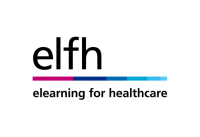Anaesthesia | Obstetrics | Venous Thromboembolism (VTE) and Pregnancy



Venous Thromboembolism (VTE) and Pregnancy
Session Overview
Description
This session discusses the incidence, aetiology, pathophysiology, risk factors, prophylaxis and anaesthetic management of venous thromboembolism in pregnancy.
Learning Objectives
By the end of this session you will be able to:
- Describe venous thromboembolism in pregnancy
- Identify the risk factors for venous thromboembolism
- Describe venous thromboembolism prophylaxis
- Identify the investigations that are used to diagnose venous thromboembolism
- Describe the management of venous thromboembolism in pregnancy
The 2006-8 Centre for Maternal and Child Enquiries (CMACE) report listed 18 deaths from venous thromboembolism (VTE) [1]. This is a significant reduction from previous years where VTE had always been one of the leading causes of death. It seems likely that this reduction in deaths is the result of better recognition of at-risk women and more widespread thromboprophylaxis.
Pregnant women are at higher risk than non-pregnant women, and those delivering by Caesarean section are most at risk. Obesity remains one of the most important risk factors, and there are guidelines for weight-specific dosage regarding thromboprophylaxis [2].
The diagnosis of pulmonary embolism (PE) is difficult in non-pregnant patients but it is even more difficult during pregnancy. Tachypnoea and breathlessness may be symptoms of PE but may be normal findings in pregnancy.
Low-molecular-weight heparins (LMWH) are used for prophylaxis and treatment of VTE, which has implications for the use of regional anaesthesia. In over 50% of maternal deaths due to VTE, the CMACE report rated the care to the patient as substandard [1]. There is room to improve the investigation and management of pregnant patients with VTE.
- Anaesthesia Fundamentals | Physiology | Materno-fe...
- Posted By eIntegrity Healthcare e-Learning
- Posted Date: 2024-11-13
- Location:Online
- This session will explain fetal circulation and the changes which occur at birth.
- Anaesthesia Fundamentals | Physiology | Functions ...
- Posted By eIntegrity Healthcare e-Learning
- Posted Date: 2024-11-13
- Location:Online
- This session will explore the functions of the placenta and will provide the necessary understanding for a doctor starting in obstetric anaesthesia.
- Anaesthesia Fundamentals | Physiology | Physiology...
- Posted By eIntegrity Healthcare e-Learning
- Posted Date: 2024-11-13
- Location:Online
- This session will explore the changes in gastrointestinal, central nervous system, endocrine, renal and musculoskeletal physiology providing the necessary understanding for a doctor starting in obstetric anaesthesia.
- Anaesthesia Fundamentals | Physiology | Physiology...
- Posted By eIntegrity Healthcare e-Learning
- Posted Date: 2024-11-13
- Location:Online
- This session will explore the changes in cardiovascular, haematological and respiratory physiology during pregnancy and labour, providing the necessary knowledge for a doctor starting out in obstetric anaesthesia.
- Anaesthesia Fundamentals | Physiology | Thyroid an...
- Posted By eIntegrity Healthcare e-Learning
- Posted Date: 2024-11-13
- Location:Online
- This session is split into two sections. The first outlines the physiology of the thyroid gland and homeostatic control of thyroid hormone secretion. The second describes and explains the body’s mechanisms for controlling plasma calcium concentrati

